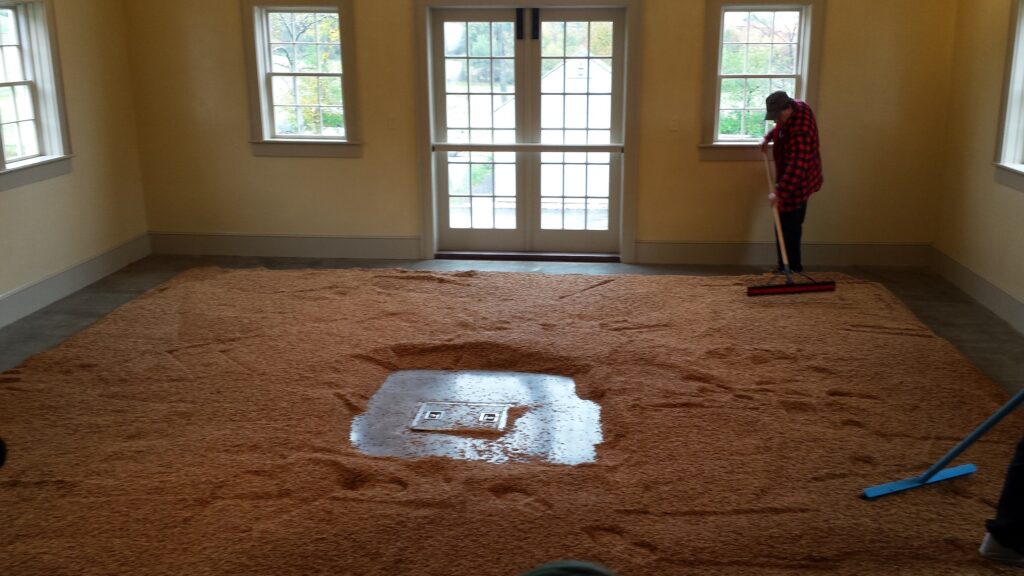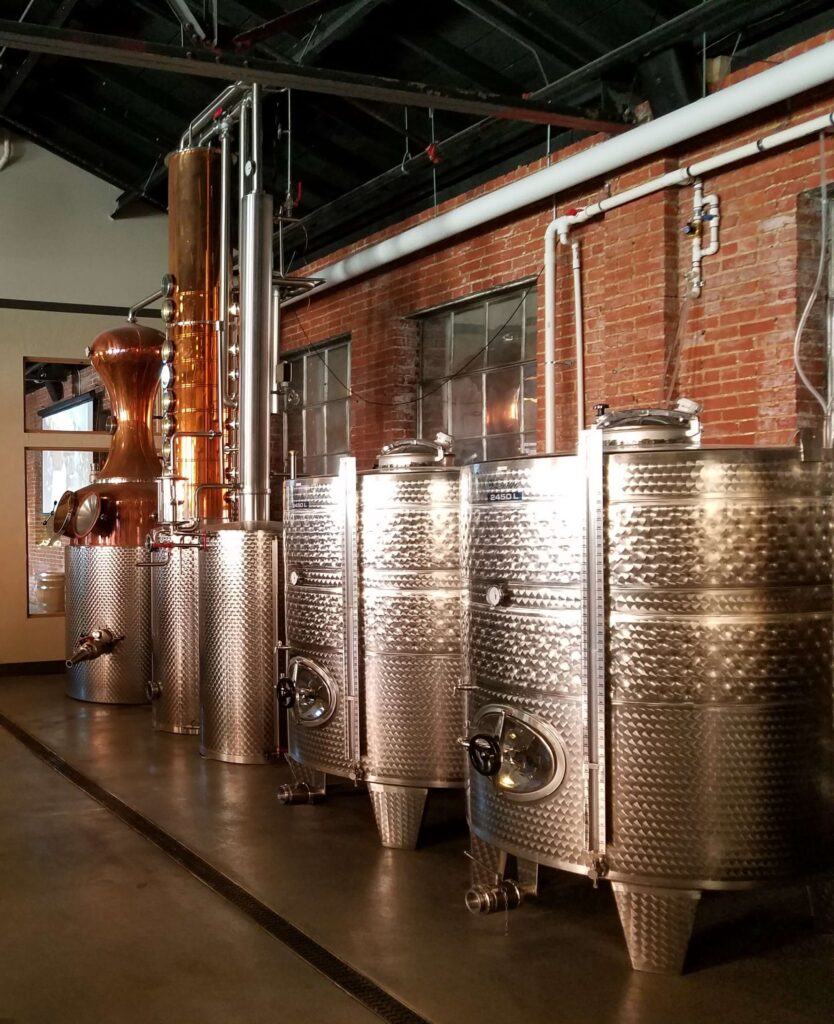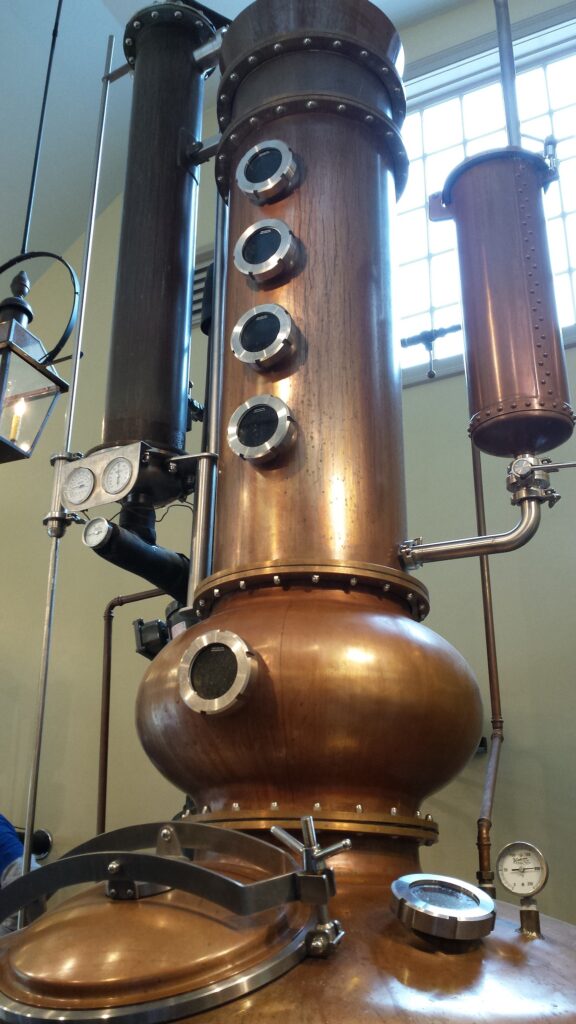As collaboration increases across the craft beverage space, industry-specific influencers must ascend into unfamiliar territory when discussing cross-pollinated products or multiple industries within a region. We have come across a lot of confusion and misinformation when it comes to American whiskey and bourbon. Understanding the differences between the various types of whiskey and bourbon, as well as the complex lexicon used to describe them, can be a daunting task. But fear not, this comprehensive guide will help you navigate the world of American whiskey and bourbon like an experienced professional.
Introduction to American Whiskey and Bourbon
American whiskey and Bourbon are distilled spirits made from fermented grains, typically corn, rye, wheat, and barley. While all Bourbon is a type of whiskey, not all whiskey is bourbon. In order for a whiskey to be considered Bourbon, it must meet certain legal requirements. For example, it must be made in the United States, contain at least 51% and no more than 81% corn, and be aged in new, charred oak barrels for a minimum of two years. And finally, nothing can be added to the Bourbon at bottling except water to cut the proof.
Understanding the Distilling Process
The distilling process for American whiskey and Bourbon begins with the fermentation of grains. The grains are mixed with water and yeast to create a mash, which is then heated and distilled to create a high-proof alcohol. The alcohol is then aged in barrels, which imparts flavor and color to the spirit. The length of time that the spirit is aged in the barrel will vary depending on the type of whiskey or Bourbon being produced.

The History of American Whiskey and Bourbon
The history of American whiskey and Bourbon is deeply intertwined with the history of the United States. Whiskey production in America dates back to the colonial period, when it was primarily produced for medicinal purposes. Farmers soon discovered that it was more profitable to distill their grains and transport the whiskey in barrels as opposed to the potentially rotting grains. During the American Revolution, whiskey became a form of currency and was even used to pay soldiers. George Washington’s first Presidential crisis was not with the British, but with farmers in Western Pennsylvania upset about a new excise tax on all distilled spirits during the Whiskey Rebellion.

When the tax was repealed in 1802 by Thomas Jefferson, Kentucky Bourbon was able to leverage their vigorous corn crop, limestone-filtered water, and river transport to become a popular spirit throughout the country. That being said, Pennsylvania and Maryland were the epicenters for rye whiskey production.
After the Civil War, and particularly after the building of the first transcontinental, unethical bottlers and rectifiers sold “bourbon” that had a base of white whiskey with coloring additives ranging from prune juice to tobacco spit. Legitimate distillers then lobbied Congress to regulate this process out of existence which led to the passage of the Bottled-in-Bond Act of 1897. To get a “Bottled-in-Bond” designation, a whiskey had to be the product of one distillation season of one distiller at one distillery, aged in a federally-bonded warehouse under government supervision for at least four years, then bottled at exactly 100 proof. Even with this victory, American distillers did not notice the storm clouds on the horizon as the Temperance Movement gathered steam which ultimately led to the 18th Amendment and Volstead Act.
The Lexicon of American Whiskey and Bourbon
The lexicon of American whiskey and bourbon can be overwhelming for those new to the industry. Some common terms include:
- Mash Bill: The recipe of grains used to make the whiskey or bourbon.
- Sour Mash: A process that adds a portion of the spent mash into the new mash to help regulate bacterial growth and ensure continuity from batch to batch.
- Pot Still: A still usually made of copper and used to distill a limited amount of mash that fits into the boiler.
- Column Still: A more industrial system that receives a continuous feed of mash to and could have multiple columns to purify the spirit to increasingly greater degrees.
- Barrel Char: The level of char on the inside of the barrel which affects the flavor of the spirit.
- Angel’s Share: The amount of spirit that evaporates during the aging process.
- Single Barrel: A whiskey or bourbon that comes from a single barrel rather than a blend of barrels.
- Rectification (rectifier): Any process or procedure where distilled spirits are cut, blended, mixed or infused with any ingredient which changes the character and nature of the distilled spirits.
- Bottler: Someone who takes a bulk spirits and bottles it.
- Midwest Grain Products (MGP of Indiana): A distillery in Indiana that specializes in making rye whiskey with a 95% rye – 5% malted barley mash bill, which is bottled under various brand names.
- Proof: another word for ABV 100; proof is 50% alcohol by volume .
- Barrel Proof: the proof at which whiskey sits in the barrel and is uncut (no water was added to reduce the alcohol by volume).
- BTAC: Buffalo Trace Antique Collection
Types of American Whiskey and Bourbon
There are several different types of American whiskey and bourbon, each with its own unique characteristics. Some of the most common types include:
- Bourbon: A whiskey that is made in the United States and contains at least 51% corn in the mash bill. It must be aged in new, charred oak barrels for at least two years.
- Rye Whiskey: A type of whiskey that must contain at least 51% rye in the mash bill. It is typically spicier than bourbon.
- Tennessee Whiskey: A type of straight whiskey that is made in Tennessee and is filtered through charcoal before being aged called the Lincoln County Process..
- Straight Whiskey: A whiskey that has been aged in oak barrels for at least two years and does not contain any additives.
- Malt Whiskey: A whiskey made from a mash of at least 51% malted barley and aged in charred new oak casks.
- American Single Malt Whiskey: A whiskey made from 100 per cent malted barley and distilled entirely at one distillery. Additional rules apply.
- Corn Whiskey: a whiskey made with at least 80% corn and if aged, it must be done in uncharred or previously used American oak casks.
- Bottled in Bond: A label for an American-produced distilled beverage that has been aged and bottled according to a set of legal regulations as originally specified in the Bottled-in-Bond Act of 1897.

How to Taste American Whiskey and Bourbon
Yes there is a difference in tasting whiskey and whisky. You can use a similar metric but the flavor profile is in fact different from scotch or other whiskeys and so American whiskey and Bourbon get their own lexicon so stay tuned for the other whiskey guides.
Tasting whiskey and Bourbon is a skill that takes time and practice to develop. To taste like a professional as you evaluate, follow these steps:
- Always use a clean, soap free glass as spotless as possible
- Find a space in your home or office where you can taste/ evaluate as a permanent space. The conditions should be as identical as possible when evaluating anything
- Start by having the following ready:
- Scratch paper or whatever you use to take notes (often it will be the BevFluence Platform)
- Prepare the samples in order of how you will taste them
- Be camera or panel ready if tasting in groups
- Have water and PLAIN crackers ready, almonds if they are plain can also be used
- See: Look deep at the spirit in the glass
- Are there flaws?
- Is it clear? Opaque?
- What does the color tell you?
- Pale, Gold, Amber, Brown, Orange, Blueish almost Black?
- Nose: Smell deep in the glass
- Clean? Flaws? Funky?
- What is the intensity?
- Light, intense, fell out of your seat it smelled so bad?
- Aroma… See the lexicon above. Does it smell like it should?
This is the most important factor in evaluating spirits: EVALUATE what is in front of you. Do not go on a tangent about how great this would be with some age, or what barrel they should use. Judge clear spirits as clear spirits, not what they will or could be.
- Taste: Take a small sip
- No need to guzzle the whole sample just to spit it out.
- Take a tiny sip so that you can swallow a miniscule amount and let your entire palate learn.
- Is it:
- Dry, medium dry, sweet, too sweet? Did your head explode from the sugar?
- How does it feel?
- Rough, smooth, easy like Sunday morning? Warm, juicy?
- Intense, watery, pronounced?
- Does the commodity taste as it should?
- Is the finish long, short, medium?
Then add your final thoughts and notes and put it together in a review.

Following these tasting steps means you will have a standard and when you speak about whiskey you understand better how you came to those notes.
Avoid the following:
- Copying the brand tasting notes
- Using flowery or complicated language if it is not needed
- Adding too many descriptors that all mean the same thing, we all know there is absolutely no difference between lead pencil and lead pencil shavings
Perhaps what is most important is to have fun.
Pairing American Whiskey and Bourbon with Food
Pairing whiskey and Bourbon with food can be a challenge, but there are a few general rules to follow. Pair what you want and have some fucking fun, do not be shy when discussing your personal preferences, taste profile or recipes. Whiskey drinkers are tired of being lectured at, so take what you know and go for it.
Two types of pairing include:
Compliment: Like with like, sweet flavors with sweet and spicy with spicy
Contrast: Pairing things that will have a contrasting flavor profile such as a spicy rye with chocolate mousse, or spicy beef with an old fashioned.
You are not limited to this, do not think you are. Again, have fun.
American Whiskey and Bourbon Cocktails
While whiskey and bourbon are delicious on their own, they can also be used to create a wide variety of cocktails. Some popular whiskey and bourbon cocktails include:
- Old Fashioned: A classic cocktail made with bourbon, sugar, bitters, and a twist of citrus.
- Manhattan: A cocktail made with whiskey, sweet vermouth, and bitters.
- Mint Julep: A refreshing cocktail made with bourbon, mint, and sugar.
- Whiskey Sour: A cocktail made with whiskey, lemon juice, and sugar.
- Boulevardier: A Negroni-ish cocktail made with whiskey, sweet vermouth, and Campari.
- Kentucky Mule: A twist on the Moscow Mule using bourbon, lime juice, and ginger beer.
To learn more about cocktails ask about our Bartender Lab.

Conclusion
American whiskey and Bourbon are complex and fascinating spirits that have a rich history and a bright future. By understanding the distilling process, the lexicon of whiskey, and the different types and styles available, you can develop a deeper appreciation for these delicious spirits. Whether you enjoy sipping them neat or experimenting with cocktails, American whiskey and Bourbon are sure to delight your taste buds.
Stay Tuned for the BevFluence Academy which will guide you in your pursuit should you choose to become a better spirits judge.
Most of all, have fun with it.




